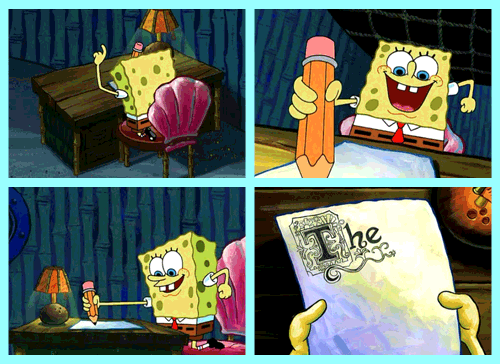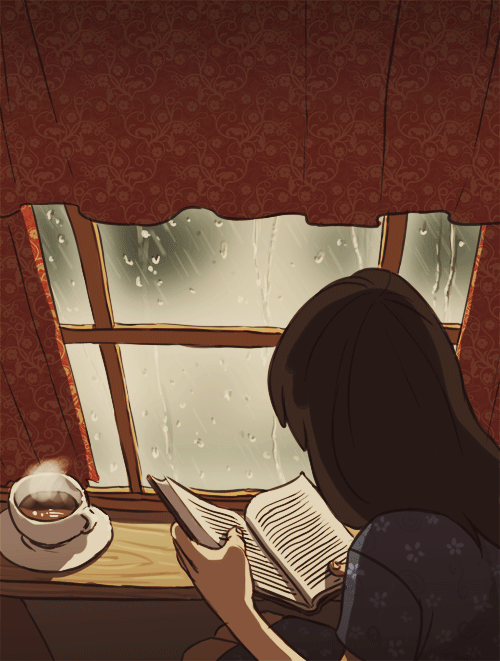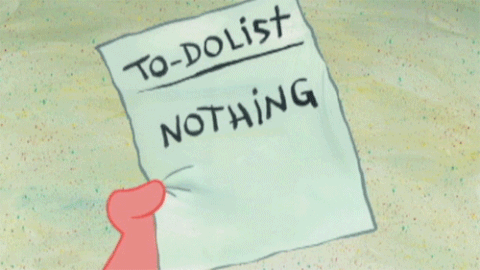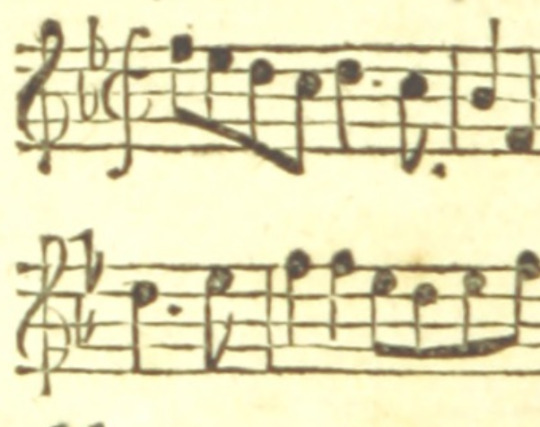Don't wanna be here? Send us removal request.
Text
Blog Post 10: A Semester of Poetry

I want to start off by saying I am so glad I got the opportunity to take another poetry class before finishing up my degree. It was an honor to learn from Professor again and to learn from my peers. Over the past almost five years of schooling, I have learned to love and appreciate the process of peer-related work. Every discussion and peer review has not only helped me sharpen my writing tools, but I’ve also become inspired by my professor's and peers’ incredible work.
Besides expanding on my writing through feedback, I love reading, and from the discussions to the blog posts, I’ve been opened up to so many perspectives, thoughts, and approaches to art, that I may never have considered on my own. Through this teamwork, I’ve learned that collaboration really is the backbone of the writing world.
In addition to being exposed to my peers’ artistry, this coursework has introduced me to so many new poetic styles and poets. An honorable mention is the writer Danez Smith, and I’ve also loved looking through Johanna Goodman's art since Discussion One. Then, of course, there are the poetic styles we’ve had the opportunity to try and master. After each module, I kept finding myself picking a new favorite style of writing for my free time, and I still absolutely adore creating list poems, so thank you, Professor.
There are so many tips and techniques I now use in my work that I hadn’t really before, from playing around with rhythm outside of rhyming to using more concrete language to complement the abstract. I’m excited to continue using and developing these techniques in my writing, and I’m also excited about what the future holds for all of our academic and professional journeys.
I hope for nothing but the best for everyone in their future endeavors! We are all going to continue to make some beautiful art.
Signing off,
A lover of paper and keys.
6 notes
·
View notes
Text

Blog Post 9: Submission Process
Although this course, and a few others I’ve been taking, have been preparing me for the submission journey, I’m still on the fence about whether I’m ready to submit my work. It’s not the overwhelming number of journals and magazines to choose from, or the process of signing up for Submittable, or even the submission guidelines that cause me stress. What holds me back is choosing which pieces of my writing I feel I am ready to submit.
Even though I’ve been writing since I was a child and have always dreamed of being a published writer, I want to be sure I’ve taken the time to truly craft, draft, and revise my work so I can submit something I’m proud of. I might be overthinking it, but the information in this module, and signing up for Submittable, has brought me closer to making a decision.
I’m also taking another course that included an assignment where we had to create a list of journals, magazines, and publishers we’d like to submit to. I’ll share mine below! I’d love to know which places you’ve submitted to or are hoping to in the future.
Book List:
Big Five: HarperCollins & Penguin Random House (Both have some of the best markets for Young Adult novels, which are the types of stories I tend to write in my free time).
Self-Publishing Platforms: Amazon KDP & Apple Books
Poetry List:
The Adroit Journal (I learned about them during an internship, and after attending their virtual launch in 2024, I knew I’d love to submit my work there.)
Frontier Poetry
Poetry Magazine
The New Yorker
6 notes
·
View notes
Text
Blog Post 8: Shakespearean Sonnet and Haiku

The Shakespearean sonnet and haiku have always been the most memorable poems from each poetry course I have taken so far. I think it’s because of how much time it takes me to write the sonnet. The technicalities and structure of a sonnet are beautiful in themselves, but I have to say that, similar to anything outside of free verse, it poses challenges; challenges that sometimes leave me frustrated, lol.
Nonetheless, the main issue for me is always maintaining the 10 syllables for each line. It of course makes you come up with clever lines, but sometimes I feel like I can’t say all I need to say, and the message of the line, stanza, or even the poem as a whole isn’t conveyed properly. What I have found to "help" with this issue is allowing rhetorical language to take a backseat. Although I love a good metaphor and so forth, I would rather my lines of 10 syllables make sense and clearly convey messages and emotions.
I have also embraced writing my poems "out of order" more than ever, but the Shakespearean sonnet always forces me to do this. The same challenge of maintaining structure forced me to write the haiku's lines "out of order," too, but the haiku is usually easier to write because it is the sonnet reduced.
Lastly, I want to say that each poetry course I have had the pleasure of taking, including this course, has helped me to not only understand the challenges but also the privileges of being a writer in the 21st century. The main privilege I have learned over time that writers experience is the bravery and honor that comes with using their art to speak for themselves and others. Besides that honor, bringing people together is another beauty of writing.
This course and you, Professor, have brought together students from all walks of life and connected us through the language of poetry. The amount of beautiful poetry I have read has opened my eyes to new subject matters, people, perspectives, and so forth. I am really excited for everyone and what they will do with their skills and work.
6 notes
·
View notes
Text
Blog Post 7: List Poem

After realizing that a list poem is just what’s being said and insinuated, I knew it would either be the hardest or the easiest poem to write in this course. But it was when I read Danez Smith's Alternate Names for Black Boys, that I was left in awe and knew this would be a great exercise. At first, I couldn’t really fathom a list poem holding much substance or themes, and in my mind, that was exactly why it would be so hard to write. But it was the “List” reading and Smith’s words that truly opened my eyes and mind. I went from having no idea what to write about to having too many ideas to choose from. I eventually narrowed it down to a theme that’s been showing up in most of my recent poems and also made the most sense to connect to a list poem, which is dreams/goals. More specifically, I’ve been writing and thinking about which of my current dreams and goals still feel authentic, and which were just fantasies meant for a past version of me.
The next obstacle I faced while creating my poem was making sure my list had not only a commanding first line, but also lines filled with concrete language, strong metaphors, and other literary devices. I spent most of my revision time trying to connect what I had already written to these added components and layers. Overall, this was such a great way to push one's writing further. I love playing around with different poem styles because it’s when you read something unexpected, or write something unfamiliar, that you really start to hear your voice as a writer and grow your skills.
5 notes
·
View notes
Text
some of my favorite woven tapestries, by Cecilia Blomberg:

Point Defiance Steps

Mates

Rising Tides

Vashon Steps
201K notes
·
View notes
Text
the only failure to humankind is giving up on oneself
104 notes
·
View notes
Text
Blog Post 6: Persona Poem

I have to say that, aside from the Ekphrastic poem, the persona poem has been my favorite to write. While I love discovering my own voice through my writing, as someone who has in recent years felt a strong pull toward creative writing, including promotional/media content, slogans, jingles, and songs, etc, this assignment was a direct connection to a potential career of mine. This exercise encouraged me to contain and then connect my own opinions and voice to in a way, to help another voice be heard.
Stepping into the shoes of a beloved childhood character like Penny Proud was both a challenge and a fun and creative experience. I began with basic research, starting with The Proud Family's Wikipedia page. I read articles, watched interviews with the show’s creators, and, most importantly, studied THE Kyla Pratt, the voice actor behind Penny. It took research, time, and multiple rewrites to make sure that I was hearing Penny’s voice rather than my own as I crafted the poem.
The more episodes I re-watched where I focused on her personality, delivery, tone, vocabulary, and so forth it was a little easier to replace my words with Penny's. The key episode that influenced my poem was The Proud Family Season 2, Episode 4, "Poetic Justice." This was one of my favorite episodes as a kid, not only because I loved poetry slams, but also because of its conversation about friendship. Nonetheless, in this episode, I had the perfect opportunity to see and hear exactly how Penny would write and recite a poem.
With each draft, I tried to picture Penny on stage, imagining her voice delivering my words. While I know there is plenty of room for improvement, I hope I did Penny justice because I remember how, as a kid, it always felt like Penny was speaking directly to me, and to any other young child figuring out life. So, in my persona poem, I didn’t imagine myself speaking to young kids. Instead, I tried to imagine Penny speaking to the younger me and my friends on a Friday.
5 notes
·
View notes
Text

Blog Post 5: Music and Rhythm
As a music lover, I always love learning about the connection between music and other forms of art. While reading the sections Music and Rhythm I found many great tips on what “…poets use to shape their language into music” (Huey et al. 36). Some of the advice that stuck with me and that I would love to implement in my writing journey, possibly while revising my Ekphrastic poem, includes being more intentional about rhythm by focusing on form and including rhetorical devices outside rhyme, such as alliteration or assonance.
I usually write free verse poetry, which sometimes leads me to put form last, if I consider it at all. I think the only times I’ve truly focused on form and structure before and while writing my poems have been in class (I know, I need to do better lol). As much as I love free verse, I’d like to challenge myself outside of class by considering rhythm through form earlier in my writing process, perhaps by experimenting with sonnets.
Additionally, I tend to gravitate toward rhyming poetry, likely because I’m a music lover, especially of rap. While rhetorical devices like alliteration and assonance are present in, both music and my poetry, I often realize I’ve heard or used them only after I’ve listened to the music or written the poem, just like with form. This also might be because, again I am so focused on expression and emotion that I prioritize words first and consider form, structure, and rhetorical elements later.
If anyone has tips on how I can experiment with different approaches to writing poetry, I’d love to hear them!
Thanks.
Work
Huey, Amorak, and Kaneko, Todd . Poetry. Yuzu, Bloomsbury UK, 2018. p. 36.
5 notes
·
View notes
Text
Blog Post 4: Image & Metaphor: Drawing With Words
This week’s readings from Poetry by Amorak Huey and Todd Kaneko replayed in my mind as I wrote my first draft of an Ekphrastic Poem. While this is not my first time writing a piece inspired by an image, I think this is the first time I have done so with full awareness. In the past, I have written poems and songs influenced by paintings or photographs, but only now am I truly understanding the relationship between language and visual art. There is a distinct difference between simply redrawing an image with lines and shapes and redrawing a picture with words.
Nonetheless, as I reworked my draft I also went over the requirements outlined in the Poetry Workshop Form again. This reflection helped me realize that I tend to focus heavily on evoking emotions, but I am not always sure how much my work appeals to all of the senses. I believe my writing leans more on abstract imagery than concrete words and this is may be why my work is not appealing to all of the senses.
Huey and Kaneko state that “the image is perhaps the building block of all successful writing” and that "… the image in writing is more than that: it’s anything that can be perceived with the senses" (29). So, I now see the importance of using more concrete and metaphorical language and using fewer judgment words in my writing.
Judgment words are another aspect of my writing that I am now more conscious of. In my previous efforts to express myself and convey a message, I forget just how much the poem's "success" lies in the reader’s interpretation, thoughts, and experience with the poem.
Work
Huey, Amorak, and Kaneko, Todd. Poetry. Bloomsbury UK, 2018.
6 notes
·
View notes
Text
Word Substitution Poems
To the Mountains To the Highway By Eileen Myles By me when I look out When I steer out at you onto you how absurd to think how silly to think of Diet Coke about Folgers coffee killing me deteriorating me I’m flying through I’m driving on the air the pavement and there you are and here you are white and dangerous bumpy and murderous who’s kidding who who's fooling who
Recovery Compulsion By Kaveh Akbar By me First, setting down the glass. First, scrubbing down a hand. Then the knives. Then a wrist. Black resin seeps White suds spill into the carpet. into the sink. According to science, According to anxiety, I should be dead. we could be infected. Lyptus table, unsteady Counter space, leaky boat, drifts away. faucet, drips away. Angostura, agave, Water, soap elderflower, rye— heat, steam— the whole paradisal the entire sanitary bouquet spins apart. process falls apart. Here, I am graceless. Here, I am helpless. No. Worse than that. No. Weaker than that.
*** ***
3 notes
·
View notes
Text
Blog Post 3: Warm Up: Word Substitution Poem
Whenever I get the opportunity to create a word substitution poem, I get excited because I enjoy finding the right balance between mimicking the parts of speech and personalizing the poem. My first encounter with this type of poem was a few semesters ago, and at first, I wasn’t sure how I could make it feel like my own while closely following the syntax, diction, and structure of the original poet’s work. However, once I began experimenting, I was surprised at how naturally my voice and perspective appeared, even within the original poem’s structure.
This was the case again. As I re-read the original poems multiple times, I originally felt slightly intimidated by how well-written they were and struggled to see my own words and message within them. However, breaking down the parts of speech, a step that always sparks inspiration for me, helped shift my perspective. Although identifying the parts of speech, particularly in Eileen Myles’s To the Mountains, was challenging this time, something always clicks once I analyze them. Reading the poem with the parts of speech identified allowed my words, ideas, and even potential titles to flow.
As my professor quoted, I was able to express myself poetically because of the original poem’s success. Its syntax, diction, punctuation, and structure provided a foundation that eventually allowed my version to become a successful poem as well. I usually approach the guidelines of a word substitution poem similarly to structuring an essay. In many ways, these guidelines are similar to the structured elements of an MLA or APA paper, both of which require key components, such as a thesis and topic sentences, to shape the final piece.
8 notes
·
View notes





